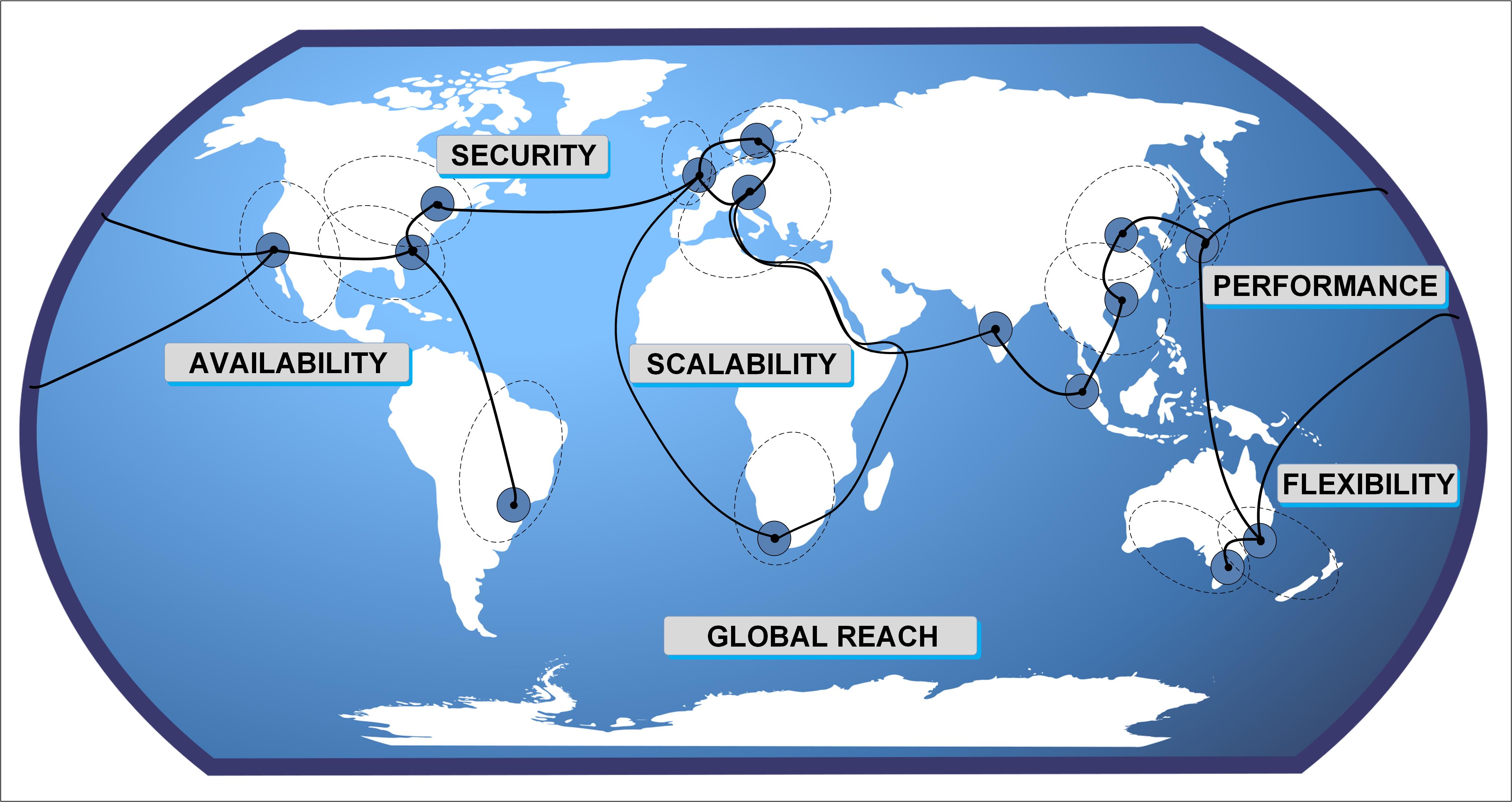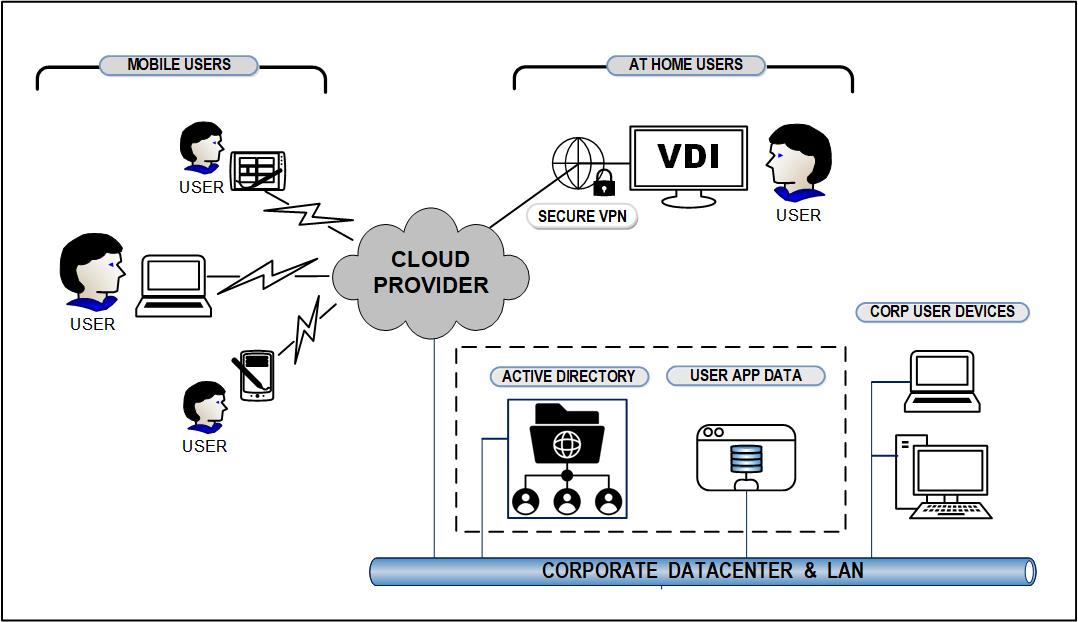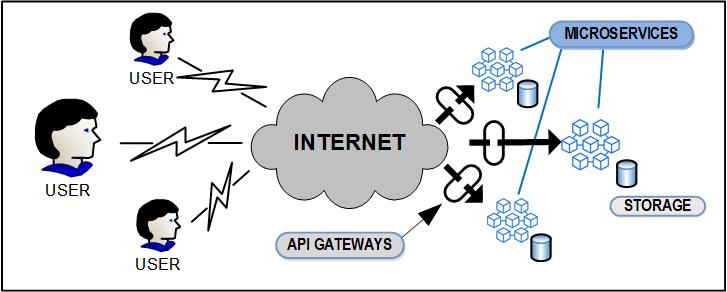The Basics of End-to-End Cloud Media Production
Dashboards and virtualized desktops enter the mix

A paradigm shift in media-production technologies is changing how the cloud is perceived, used, presented and applied to media production. The lines between ground-based and cloud-based media production are becoming blurred.
One of the first steps in getting to a cloud-based production environment is understanding how the requirements and the components differ and those physical hard interfaces are being replaced by topics like dashboards and virtualized desktops.
We start with cloud computing, an application-based solution known also as an “infrastructure in the cloud.” Cloud computing is divided into a front-end part and a back-end part. To the user, these details don’t need to be thoroughly understood—but it is helpful to know that the end-to-end ecosystem is changing so that acceptability of these differences can be evaluated and adopted.
Users needing access to the cloud will typically employ a browser and will utilize a (public) internet service provider (ISP) for that access. Sometimes, instead of an ISP, there may be a direct connection portal available by the cloud service provider as a cost-added feature that provides for faster, more secure connectivity.
The primary component of a cloud computing solution is its back-end, which has at its core the responsibility for securing, storing and/or processing data on its often proprietary central servers, compute stacks, databases and storage sets. Cloud computing is multifaceted, employing databases, servers, applications and other elements including orchestration, storage and monitoring.
For years this Cloudspotter’s Journal has identified the advantages of cloud capabilities including scalability, virtualization, availability and the like (Fig. 1). It goes without saying that services available in the cloud continue to grow.
Yesteryear had cloud focused on storage. Today, cloud providers offer hundreds of specific services ranging from compute and storage to cloud consulting (through partners) and management. Each provider aims to enable users to deploy their compute and storage requirements in the cloud offering various competitive platforms, all eager for users to experiment in any way conceivable.
Get the TV Tech Newsletter
The professional video industry's #1 source for news, trends and product and tech information. Sign up below.
MEDIA-SPECIFIC AND CLOUD FORWARD
In more recent times the capabilities typically exposed in cloud services have started to reach deeper and farther into media-specific offerings. Global connectivity coupled with the rapid exchange of content throughout the world has strengthened those capabilities, with the provisioning of services increasing at an almost exponential rate. Applications for media production in the cloud are no longer just a unique opportunity; they are becoming a way of operating.
Cloud-forward initiatives are definitely expanding beyond simple storage and compute functions or alternatives to back-office software consolidation. Once thought of for storage as backup, cloud services now endeavor to provide full-time playout of programming on a channelized basis that includes sports, gaming, OTT services and delivery, and even into end-to-end production using core products from providers who had previously only utilized ground-based server architectures.
Major media organizations are steadily adopting and combining technologies that take the hardware out of the shop and place it in an entirely software-centric environment connected by on-ramps and off-ramps located almost anywhere. Dynamic scalability and high-performance storage/compute capabilities are enabling this fundamental change in how content is assimilated into the production ecosystem.
Today GP8-based virtual machines are now enabled using infrastructure-as-code into software applications that were formerly run on dedicated “pizza-box” servers. As a result, organizations are already shifting away from in-house central equipment rooms and past the outsourced data center directly into public cloud environments. Media workflows are now being developed as cloud-native solution sets, ignoring how things “used to be done” and placing them into unconstrained, non-interdependent environments that are treated almost like the way a new-greenfield facility might have been engineered for single purpose occupation as recently as five years ago.
Automation is a key factor in the success of making cloud-native media production successful. Back-office-like servers are no longer mainstream. Individual sets of configurations coupling a single-function device into the next single operation are evaporating. Plug-in management that was custom-tailored to the product and then tweaked to meet the operational needs are now orchestrated to rapidly adapt to multiple functional requirements without discrete, complex or time-consuming adaptations.
Once the automation process is confirmed and the capability requirements are established, the rest just happens. Through a dashboard abstraction of the functions, users are then ill concerned with all the nuances of manually moving files around various services that are typically steeped in numerous interfaces, which must be individually accessed and configured for each successive use or application. Flows are continuous, repeatable (if necessary) and able to be monitored.
Using configuration management tool sets, images of the application-specific interfaces (APIs) are landed on a resource pool of compute servers that operationally never see the light of tech-administrators. Systems are booted up, configured for the applications per the dashboard and the artist/editor starts their creative tasks.
COLLAPSE AND REDEPLOY
Once the production, show or activity is completed and confirmed, automation then collapses the environment, which stops the process and halts the billing charges. Ground-based users don’t do anything other than confirm the "end" or "stop" command and walk away. If there is a requirement to change or adMust something, the exact configurations can be re-established and the workflows can continue as before.
New capabilities were brought into accelerated use as a consequence of Covid-19 and are being applied to “next-gen-production” ecosystems. Content supply chains can now be adapted to cloud, assuming the feature sets are available. Previously ground-based features, such as analysis, transformation and quality control now become exception-based background tasks in the new cloud model.
Virtual desktop infrastructures (VDI) essentially take all the previously required elements of media production and wrap them into a solution that is secure, features high-quality and fast-reacting actions and can be accessible anywhere there is a stable internet connection with sufficient bandwidth (Fig. 2).

VDI technologies, which utilize functionality known as “zero-clients,” offer users a variety of advantages including mobility, accessibility, flexibility and improved security. The latter, security, is accomplished because now the data lives only on the servers and does not need to be transported to the active users’ workspace. Cloud-enabled platforms can replicate data using other secure technologies only to specific locations, even employing transparent ledger technology known as blockchain.
Microservices and containerization are the keys to this future cloud infrastructure for production (Fig. 3). Calling up only what is needed, only when it is needed, is what production services in the cloud are moving to.

Entire catalogs of capabilities are growing out of these cloud-native services, which up until now could not be established except through discrete sets of hardware and software that were purpose-built to do one and usually only one specific function or operation.
Reliable, secure, scalable, protected and cost-effective media production—without the annoyances of managing a complex local infrastructure—is changing the face of media from one end to the other. Whether the production services are hosted in a public cloud, regional co-lo site or even in your own private data center, the concepts developed (and being perfected all the time) are real, available and are here today.
If you’re not currently using these kinds of services, you probably will in short order. Stay tuned.
Karl Paulsen is chief technology officer at Diversified and a frequent contributor to TV Tech in storage, IP and cloud technologies. Contact him at kpaulsen#diversifiedus.

Karl Paulsen recently retired as a CTO and has regularly contributed to TV Tech on topics related to media, networking, workflow, cloud and systemization for the media and entertainment industry. He is a SMPTE Fellow with more than 50 years of engineering and managerial experience in commercial TV and radio broadcasting. For over 25 years he has written on featured topics in TV Tech magazine—penning the magazine’s “Storage and Media Technologies” and “Cloudspotter’s Journal” columns.
